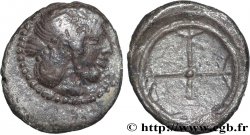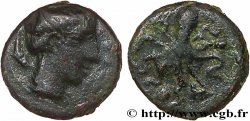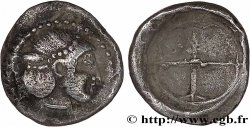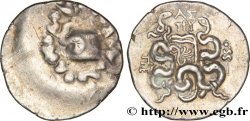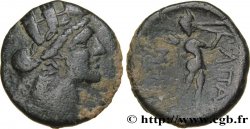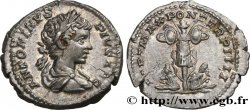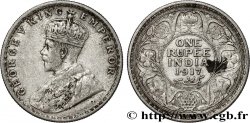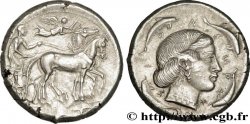v51_0033 - SIKILIEN - SYRAKUS Tétradrachme
MONNAIES 51 (2011)
Startpreis : 2 200.00 €
Schätzung : 3 800.00 €
Erzielter Preis : 3 480.00 €
Anzahl der Gebote : 7
Höchstgebot : 4 500.00 €
Startpreis : 2 200.00 €
Schätzung : 3 800.00 €
Erzielter Preis : 3 480.00 €
Anzahl der Gebote : 7
Höchstgebot : 4 500.00 €
Type : Tétradrachme
Datum: c. 450-440 AC.
Name der Münzstätte / Stadt : Sicile, Syracuse
Metall : Silber
Durchmesser : 25,5 mm
Stempelstellung : 9 h.
Gewicht : 17,39 g.
Seltenheitsgrad : R2
Emission: groupe 4, série 15
Kommentare zum Erhaltungszustand:
Exemplaire sur un flan large et irrégulier, bien centré des deux côtés. Droit de style fin, frappé avec un coin légèrement bouché, de haut relief, bien venu à la frappe. Très joli revers , montrant une grande maîtrise dans la représentation du visage d’Aréthuse. Jolie patine de collection ancienne avec des reflets dorés
N° im Nachschlagewerk :
Pedigree :
Cet exemplaire provient de la vente Lanz 86 du 18 mai 1998, n° 50
Vorderseite
Titulatur der Vorderseite ANÉPIGRAPHE.
Beschreibung Vorderseite Bige au pas à droite, conduit par un aurige tenant les rênes et le kentron ; le bige est couronné par Niké volant à droite ; monstre marin à l’exergue (Skylla) ; grènetis circulaire perlé.
Rückseite
Titulatur der Rückseite N ET S RÉTROGRADES.
Beschreibung Rückseite Tête d'Aréthuse à droite avec collier et boucles d’oreille, les cheveux relevés et retenus par un filet, entourée de quatre dauphins.
Legende des Reverses : SURAK-O-S-I-O-N
Übersetzung der Rückseite (de Syracuse).
Kommentare
Au droit, le coin commence à se boucher entre les jambes du cheval, sur la ligne d’exergue et le monstre marin. Au revers, le portrait est l’œuvre d’un grand graveur possédant la maîtrise dans le traitement d’un portrait équilibré et féminin. Traitement très particulier du collier d’Aréthuse. Début imperceptible de cassure de coin dans la chevelure sur la mèche au-dessus de l’oreille. Mêmes coins que les exemplaires du British Museum (BMC. 88, pl. XX), l’exemplaire de l’American Numismatic Society (ANS. 175, pl. 6, coll. Newell, Boehringer n° 538/4) et que l’exemplaire de la collection Lockett (SNG. Lockett, n° 938, pl. XVIII). Même coin de droit que l’exemplaire de la collection Jameson (coll. Jameson, n° 768, pl. XXXVIII).
On the obverse, the die begins to close between the horse's legs, on the exergue line and the sea monster. On the reverse, the portrait is the work of a great engraver with mastery in the treatment of a balanced and feminine portrait. Very particular treatment of Arethusa's necklace. Imperceptible beginning of die break in the hair on the lock above the ear. Same dies as the examples in the British Museum (BMC. 88, pl. XX), the copy from the American Numismatic Society (ANS. 175, pl. 6, Newell coll., Boehringer no. 538/4) and the copy from the Lockett collection (SNG. Lockett, no. 938, pl. XVIII). Same obverse die as the copy from the Jameson collection (Jameson coll., no. 768, pl. XXXVIII)
On the obverse, the die begins to close between the horse's legs, on the exergue line and the sea monster. On the reverse, the portrait is the work of a great engraver with mastery in the treatment of a balanced and feminine portrait. Very particular treatment of Arethusa's necklace. Imperceptible beginning of die break in the hair on the lock above the ear. Same dies as the examples in the British Museum (BMC. 88, pl. XX), the copy from the American Numismatic Society (ANS. 175, pl. 6, Newell coll., Boehringer no. 538/4) and the copy from the Lockett collection (SNG. Lockett, no. 938, pl. XVIII). Same obverse die as the copy from the Jameson collection (Jameson coll., no. 768, pl. XXXVIII)








 Berichten über einen Fehler
Berichten über einen Fehler Die Seite drucken
Die Seite drucken Teilen meiner Auswahl
Teilen meiner Auswahl Stellen Sie eine Frage
Stellen Sie eine Frage Einlieferung/Verkauf
Einlieferung/Verkauf
 Details
Details
